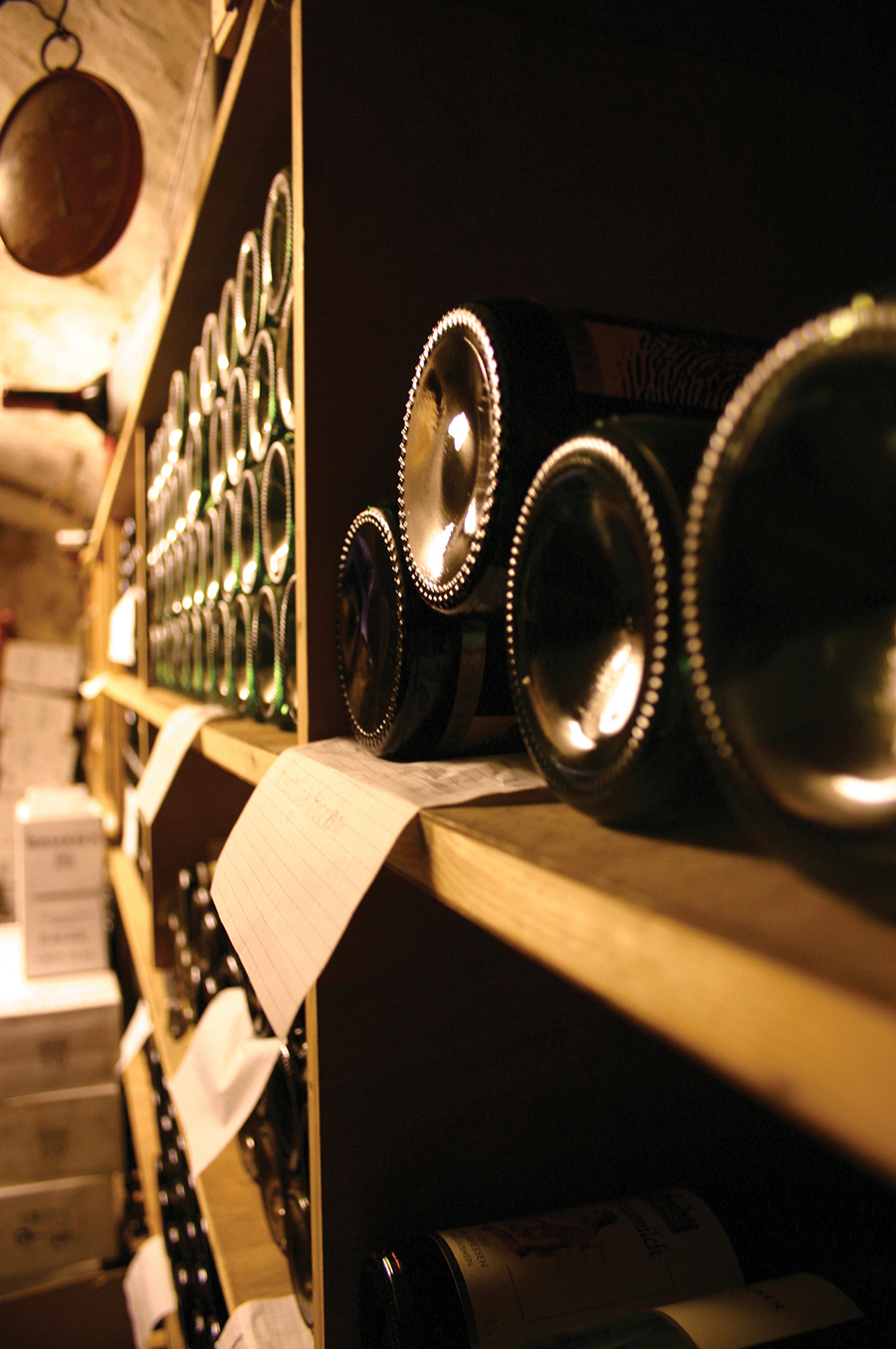By Matthew DeBord
HQ 58 | SUMMER 2006
When most people think of a wine cellar, they imagine a dank, musty cave stocked with ancient bottles. It’s true that the classic cellars of the world were, in fact, cellars, and they were also pretty dank and musty (wines like dank and musty, and they also like dark). However, the definition of a wine cellar is rapidly evolving. It ain’t just a cave anymore.
Once you begin to drink wine on a regular basis, you’re bound to catch the collecting bug. And I don’t mean collecting fancy bottles from famous chateaux in France. I mean simply keeping around a case or two (or three) of a wine you like, so that you can: (a) enjoy the 10% by-the-case discount offered by many retailers; and (b) have a nice house red and house white on hand at all times.
You might be inclined to collect ageworthy wines, as well, but I’ll get to that in a minute.
Storing wine at home generally follows a “staged” pattern. These stages are as follows:
Stage One: I’ve got a few cases of wine. Nothing fancy. What do I do with them? First off, you have to ask yourself: Do I have a basement or, yes, a cellar? If you do, the ambient temperature and humidity present (assuming there are no nearby heat sources, such as water heater or boiler) should be just about right to preserve your wine in happy state of dark musty dankness. What you’re after is consistency. You don’t want the temperature fluctuating much. The ideal is around 60 degrees Fahrenheit. All you need to do is plunk your cases down there, inverted (so as to keep the wine in contact with the cork), and monitor the temperature with a cheapo thermometer. Nothing more is necessary. If you lack a basement or cellar, the dark corner of a closet should be fine.
Stage Two: I’ve gotten beyond ordering a case or two of the same wine. I’d like to see what I’ve got. What now?
You have two options. First, you can build a little racking system in your basement or cellar. Obviously, the sky’s the limit here, in terms of how complicated you want to get. You can envision a day when you will possess thousands of bottles and construct accordingly. Or you can just buy a few inexpensive racks and set it up that way. It’s entirely up to you and your ambition. No basement? Again, you can designate a section of a closet. But over time you’ll probably run out of room, in which case …
Stage Three: I’ve run out of room in my closet. What now?
You could be in the market for a temperature-and-humidity controlled wine “cooler.” This is an appliance, like a dishwasher or stove, that typically lives under a kitchen counter. The better ones are divided into two temperature “zones,” with shelves for red and white wines (white wines are generally served colder than reds). Not a terribly expensive option for people with limited storage space, or who don’t anticipate ever having a huge collection of wine. EuroCave is probably the best-known manufacturer of these storage systems. Many homeowners are having them included when they renovate kitchens. Real estate people will tell you that they add value to a house.
Stage Four: I’ve run out of room in my EuroCave. Now what?
You have become a serious enophile, my friend. Okay, let’s assume you don’t have a suitable basement. The thing to do is convert an entire closet in your house into a wine “cellar.” A EuroCave-type system can come in handy here, as storage-system companies make wine “cabinets” that are very large, holding hundreds of bottles. They can be inserted into a closet and kept out of sight (this might involve some construction and rewiring); or they can be disguised as furniture. If you do have a basement, you might want to undertake a renovation that will “create” a cellar-space that’s dedicated to wine storage. There are companies that specialize in this, but may home-improvement companies and contractors are learning now to build a basic wine “room” in response to client demands.
You can also undertake a project like this yourself. Again, if your basement is cool and damp, you don’t need to get fancy, although you might want to purchase some tags for your bottles so you can tell them apart. But you could also create a home wine cellar with its own microclimate, effectively bringing the Old World “cave” to your domicile. This would involve building a sort of refrigerated room. Restaurants do this all the time, so the know-how is out there. But it’ll cost you.
Stage Five: I have so much wine in my cellar that I’ve lost track of it. What should I do?
You have two choices: organize it yourself or hire somebody. Organizing it yourself actually isn’t that tough. You can do it the old-fashioned way, with a cellar book that records, ledger-like, your acquisitions. Or you can go high-tech, utilizing Microsoft Excel spreadsheets or even one of a number of commercially available wine-cellar programs (most of which seem to prefer running on PCs, by the way). My preference is for a simple Excel spreadsheet, as you can be confident that the software will never lag behind your computer (just set up the sheet so that you can record wine type, label, vintage, date acquired, quantity, and maybe a brief note about the wine).
Hiring someone involves paying them, of course, but there are people, mainly in and around big cities, who are more than happy to perform the service. If your location is more remote, see if you can find someone who works at a restaurant with a decent wine list. They might be willing to give it a crack. City-slickers will charge anywhere from a few hundred to thousands, depending on the size of your collection. Newbies might ask for $20 an hour or so.
The bottom line is that you can and should amass a collection of wines. Most people have some sort of space that will do the job. Just remember: You can be using a corner of a closet or the most elaborate, expensive cellar known to man, but the wine doesn’t really care. It just wants to be cool and dark. That goes for a $7 Chardonnay the same way that it does for a $500 Bordeaux.




